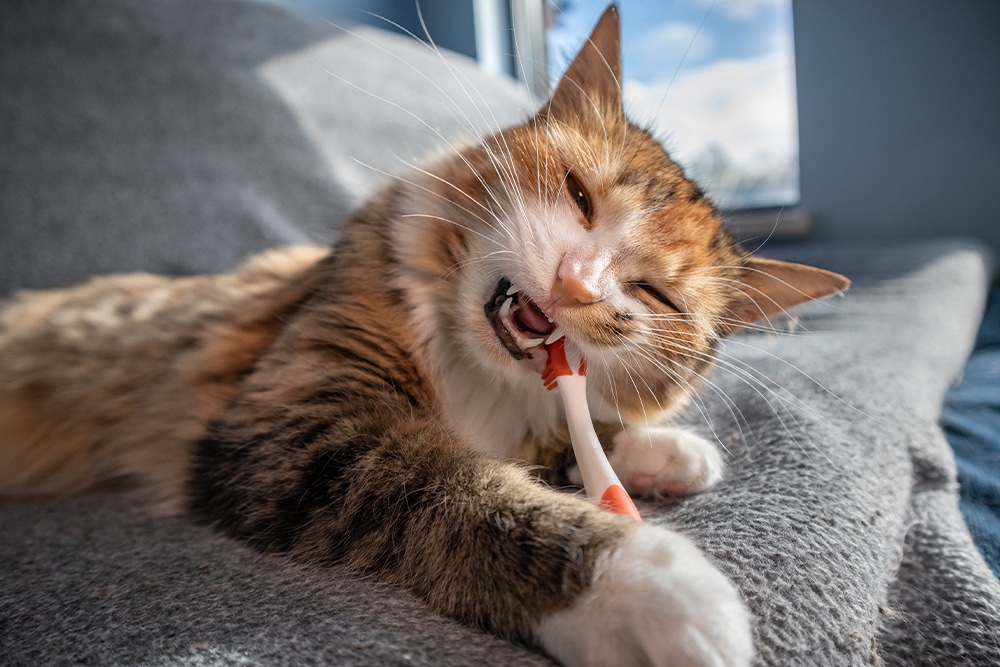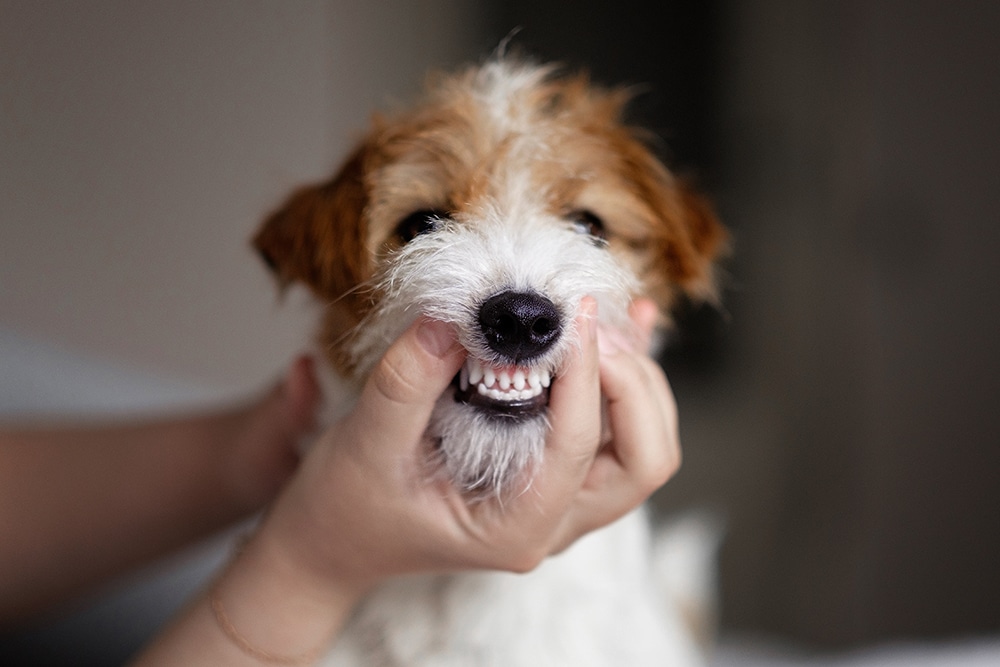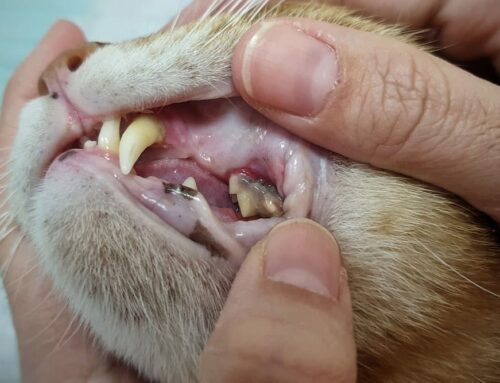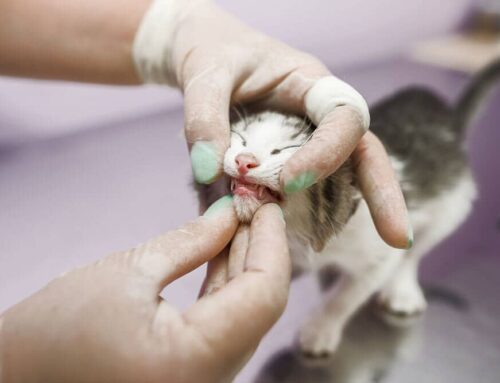Dental disease in pets doesn’t always begin with obvious symptoms. In fact, many cases start quietly—perhaps with a bit of bad breath or subtle changes in eating habits. But left untreated, these early signs can evolve into serious pain, infection, and emergency conditions that impact your pet’s health and quality of life.
At St. Petersburg Animal Hospital & Urgent Care, we see firsthand how preventable dental issues can quickly escalate. This guide will help you recognize the early signs of dental disease, understand how it’s diagnosed and treated, and know when it’s time to seek urgent care.
What Is Dental Disease in Pets?
Dental disease (periodontal disease) is a progressive condition that affects the gums, teeth, and supporting structures. It typically begins with plaque buildup and can lead to:
- Gingivitis (gum inflammation)
- Tooth decay and loss
- Root abscesses
- Jawbone damage
According to the American Animal Hospital Association, over 80% of dogs and 70% of cats show signs of dental disease by the age of three.
That’s why early detection—and regular preventive care—is critical.
Early Signs of Dental Disease in Dogs and Cats
Pets rarely show dental pain until the condition becomes advanced, which makes early signs especially important to catch. Here’s what to look for:
- Bad breath (especially sour, rotten, or metallic odors)
- Red or swollen gums
- Tartar buildup (yellow or brown discoloration)
- Drooling (possibly blood-tinged)
- Pawing at the mouth or rubbing the face
- Reluctance to chew toys or hard food
- Decreased appetite or slower eating
- Behavioral changes—such as irritability or hiding
Even if your pet seems “fine,” a single symptom is reason to schedule a dental exam.
Why Dental X-Rays Are Essential
More than 60% of your pet’s tooth structure lies below the gumline, which means problems can go completely undetected without imaging.
At St. Petersburg Animal Hospital & Urgent Care, we use full-mouth dental X-rays to uncover:
- Root infections or fractures
- Bone loss
- Abscesses
- Impacted or malformed teeth
- Hidden decay
Learn more from Preventive Vet.
Why It’s Risky to Ignore Dental Disease
When dental disease is ignored, it can escalate into far more serious problems:
- Tooth loss or fractures
- Severe oral pain
- Jawbone damage and fractures (More on jaw fractures)
- Abscesses and draining tracts
- Bacteria entering the bloodstream, affecting the heart, liver, and kidneys
Many pets will continue to eat and act relatively normal, even with fractured or infected teeth. But that doesn’t mean they aren’t in pain. Learn more from Today’s Veterinary Practice.
How We Diagnose and Treat Dental Disease
Step 1: Comprehensive Oral Exam
During your pet’s wellness exam, we visually assess their teeth and gums for early signs of disease.
Step 2: Dental Assessment and Imaging
Under anesthesia, we perform:
- Full-mouth dental X-rays
- Periodontal probing (to assess gum pockets)
- Ultrasonic scaling and polishing (above and below the gumline)
We follow the latest multimodal pain management protocols to keep your pet comfortable before, during, and after the procedure.
Step 3: Treatment Based on Findings
Depending on severity, treatment may include:
- Tooth extractions
- Antibiotics for infection
- Surgical treatment for abscesses
- Pain medications and anti-inflammatory drugs (See commonly used pain relief options)
We’ll explain all options with empathy and transparency—so you always feel confident in the care your pet receives.
Preventing Dental Disease in Pets
Routine prevention is the most effective way to avoid painful dental emergencies. Here’s how:
- Brush your pet’s teeth daily with pet-safe toothpaste
- Use VOHC-approved dental products (VOHC website)
- Feed a vet-recommended dental diet
- Avoid hard chews like bones, antlers, and nylon toys
- Schedule annual dental exams and cleanings
Also, be aware that some pets are genetically predisposed to dental problems. This includes:
- Small breeds and flat-faced dogs, who often suffer from malocclusion and crowded teeth
- Pets with retained baby teeth, which may require removal to prevent future complications
Learn more about special dental risks and conditions:
- Developmental abnormalities – Merck Vet Manual
- Malocclusion – DVM360
- Retained deciduous teeth – Today’s Veterinary Practice
When Is Dental Disease an Emergency?
Some dental issues require immediate veterinary attention. Contact us right away if your pet has:
- Facial swelling or visible abscess
- Bleeding from the mouth
- Difficulty chewing or swallowing
- Sudden changes in appetite
- Loose or broken teeth
- Foul-smelling breath with drool or discharge
These symptoms may indicate a severe infection, fracture, or painful oral lesion. Visit our urgent care page to learn more about same-day dental emergency services.

What to Do Next
If your pet is showing signs of dental disease—or hasn’t had a dental checkup in over a year—now is the time to act.
At St. Petersburg Animal Hospital & Urgent Care, we provide:
- Full-service veterinary dentistry for dogs and cats
- Advanced diagnostics and gentle, effective treatments
- Compassionate, clear communication every step of the way
Our goal is to keep your pet healthy, pain-free, and thriving—for years to come.
Book Your Pet’s Dental Exam Today
Dental disease doesn’t go away on its own—but it can be caught early and treated effectively.
Schedule a dental consultation or call us today to speak with a member of our care team. We’re here to help your pet smile brighter, eat more comfortably, and live their healthiest life.







Leave A Comment